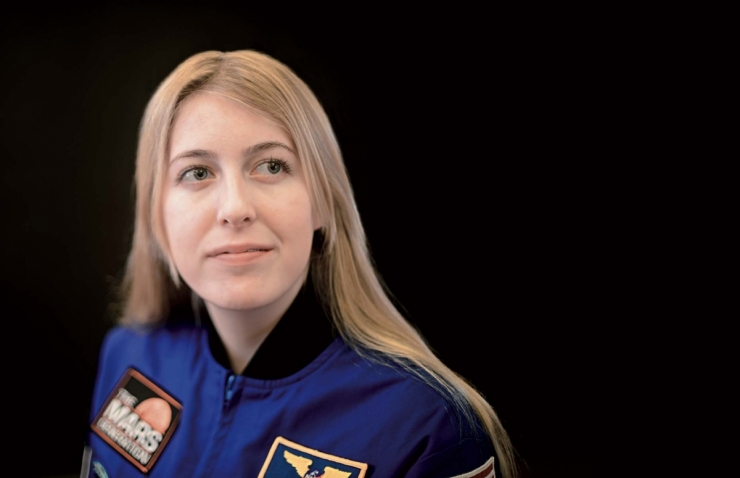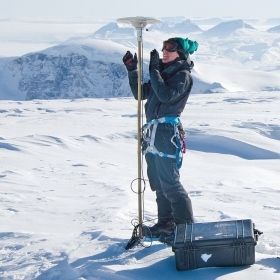Photo by Richard Howard
When Abigail Harrison ’19 was growing up in Minneapolis, sometimes in the winter, before school, she’d walk to a park near her house that had an ice-skating rink. As she enjoyed a few solitary spins around the rink, she’d look back at her footprints in the snow, the only sign of humanity, and a frisson would run through her. She’d imagine being on the surface of Mars, looking back at her footprints, knowing she was the first human to ever walk that path.
Many people have had daydreams like this, but for Harrison, traveling to Mars is more than a dream. It’s a goal she’s been working toward since she was a child, and thousands of people on social media and online have been watching her chase it since she was in the eighth grade. That’s when she created an online presence, “Astronaut Abby,” as part of her award-winning State History Day project, “Debate and Diplomacy: The History of the ISS [International Space Station].” Very early on, Harrison showed an unusual facility for social media and connected with space station engineer Susan Freeman and other scientists. She wrote on her blog about the project, “Given the importance of the International Space Station to the future of space, including sending humans to Mars, I thought it was a perfect project. My generation, the Mars Generation, will make it to Mars because of the hard work of all the people and countries involved in the ISS.”
In the spring of 2011, Harrison traveled to the Kennedy Space Center to watch the space shuttle Endeavour launch on STS-134. On her way home, she serendipitously met European Space Agency astronaut Luca Parmitano, who was behind her in the security line at the airport. Parmitano offered to chat with Harrison before their flights. Harrison remembers Parmitano advising her, “Follow your heart in your studies and do what you love. NASA is looking for people who are passionate about what they do.” Parmitano and Harrison kept in touch, and he became her mentor.








We ask that those who engage in Wellesley magazine's online community act with honesty, integrity, and respect. (Remember the honor code, alums?) We reserve the right to remove comments by impersonators or comments that are not civil and relevant to the subject at hand. By posting here, you are permitting Wellesley magazine to edit and republish your comment in all media. Please remember that all posts are public.